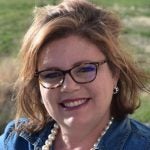The only thing worse than fire in ranching country is fire and wind. The two tend to carouse around together like drunken, angry villains in a too loud, too long movie.
Here are four scenes that capture what is happening.
* * *
In Colorado, a woman’s knuckles were clenching the steering wheel against the wind as she and the kids and the dogs went to her mother-in-law’s house in town.
She could barely hear him on the phone over the wind asking her what she absolutely needed out of the house. She tried to think of the most irreplaceable items as he and a neighbor ran inside grabbing items and racing back to safety with the smoke and flames bearing down.
The tractors rolled through town, discs folded, headed to widen and deepen a fire line to save town — the school, the church where he was married, the little businesses owned by family and friends. He lowered the disc, throttled the tractor, and saved the town.
The kids loaded school buses and headed to different schools, away from the fire. Maintainers crawled through fences and pushed dirt and ash that had drifted to the side of the roads. Firefighters answered the calls, continuing to fight at their own homes, as fire doesn’t pick favorites.
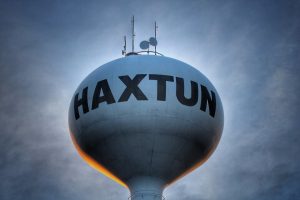
* * *
As reports of homes lost and homes spared rolled in, so did the calls. One woman stood on the phone in the little hardware store downtown and answered questions. The bottled water and baby wipes were beginning to pile up like precious gifts. They erected makeshift showers in a machine shop and ladies came to town to gather soot-covered laundry to return clean and folded.
She’s the picture of organization, one to be counted upon when a banquet, dinner, auction, or party needs to be pulled together and done right. Today, she’s no different. She’s dishing out information and taking down the names of truckers, feed dealers, hay men, church ladies, and organizations who have something to give. Her office is becoming a gathering place for an offering to a small town still reeling.
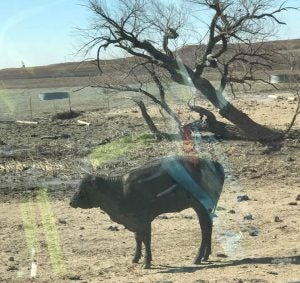
* * *
In another town, another fire swept through a man’s cattle operation. Knowing there was nothing left to save, he jumped in the pickup, dog riding shotgun, and raced to the neighbor’s house and began working to save what could be saved.
The sun rose on a beautiful cattle operation and set on ashes. The next morning, the work began trying to find and feed the cattle that remained. At fence lines, mother cows lay dead, their calves at their sides. In another pasture, singed calves wander around, bawling for their mothers.
In the daylight, 4-H kids gathered bottles and milk replacer and spread straw in pens to house trailer loads of orphaned calves they would care for and then return to the ranches once fences are replaced and hay is available. None of them groaned at the prospect of hard work, they rushed to open the gates to unload what is left of a neighbor’s calf crop.
In another kitchen, a grandmother carefully wrapped lunch and packed it into the trunk of her car. At the neighbor’s house, it was clear sleep had eluded the family for days. She placed hot coffee, a roll made just like her mama used to make, and a bowl of warm lunch into their hands. It’s grace on a paper plate.
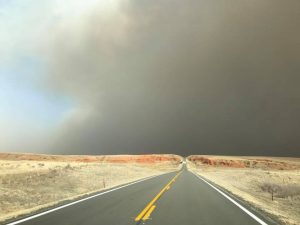
* * *
In Kansas, a young mother is on the phone riding through pastures helping drag scorched carcasses to a pile where they will be photographed, and counted. She’s on the phone as she looks over what used to be nutritious grass.
“Hold on a second,” she tells the woman on the other end and then speaks to someone there with her. “How are his eyes? We’ll come back and check on him.”
This calf, she thinks, will survive. They’ve already lost more than three-fourths of their calves and as many of their cows. She’s sharing their story on Facebook to make sure people know the work continues after the flames are out.
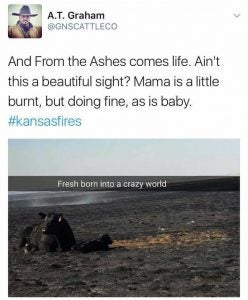
All around Colorado, Kansas, Oklahoma, and Texas, the damage is being accessed. The cattle counted, the miles of fence noted, the contents of homes destroyed listed. In Colorado, the woman is still on the phone gathering supplies, making it clear to news reporters who didn’t know the name of her town four days ago that the need for cash and hay is eclipsing the need for anything else.
In Haxtun and Ashland, people lined downtown to send their basketball teams to state and watched the busses drive away from burned ground to play against teams who have loaded their own busses with donations.
The photos of the fires on social media filled the feeds with heart wrenching images. Then a photo was shared that spread even faster. A photo, a representation of a population that doesn’t give up easily. The photo is a black cow lying next to her calf. The calf is cleaned up and doesn’t realize that all ground isn’t scorched like the ground he’s standing on. The pair is a testament to how life goes on. In the ranching business, life and death are constant companions, but new life is here and they’ll rebuild and they’ll get up.
To help those affected by the wildfires, here is a list of resources.
